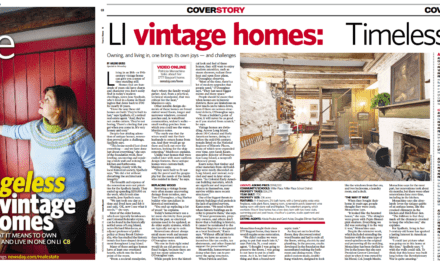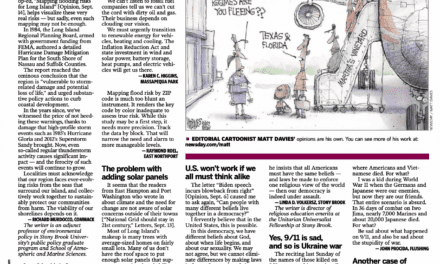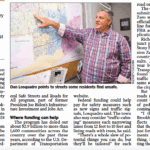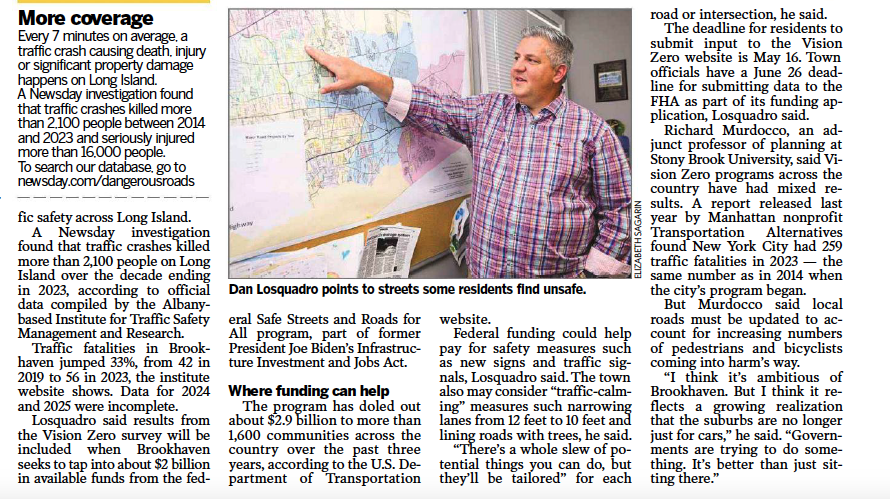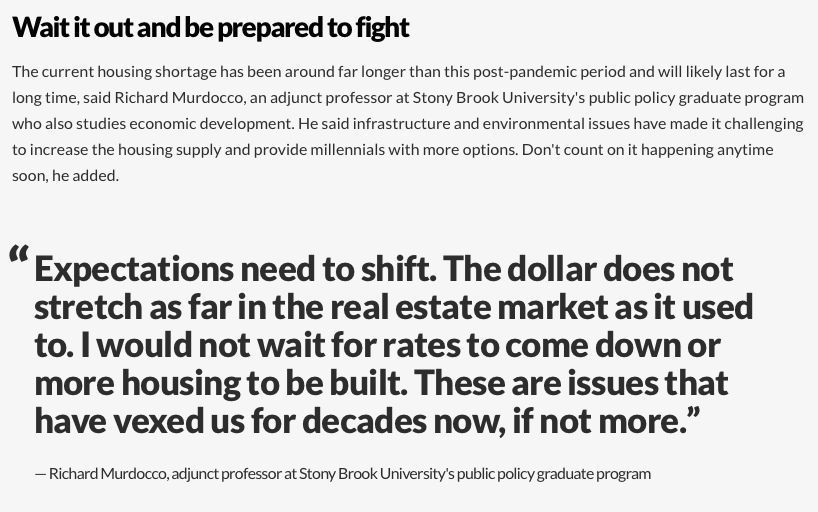Here is the article that my quote was in!
Article by Christine Sampson
New York State’s new leader called for a property tax cap, a competitive grant system for education funding, changes to the Medicare system, more transparency in Albany and other sweeping reforms in Tuesday’s “State of the State” address, which was met with mixed reactions locally.
On his fifth day in office, Gov. Andrew Cuomo outlined a series of objectives he said will return New York to its status as “the progressive capital of the nation” – but which he said will not be easy to attain.
“This is a fundamental realignment for this state. … We need, literally, a transformation plan,” he said.
Citing New York’s famously high property taxes – which he said are, on average, 66 percent higher than the rest of the nation – Cuomo asserted his support for a property tax cap. He said two million New Yorkers have moved to other states within the last decade because they can no longer afford to live in the Empire State.
The property tax cap was met with mixed reactions in Three Village.
“‘Atta boy,” said one resident, originally from Canada, who declined to give his name.
“[It] sounds like it makes good sense,” said Bruce Reisman of Setauket.
Neil Lederer, interim superintendent of the Three Village Central School District, said it could be “very bad” for school districts.
“Most people will be supportive of it because it will save them on taxes, but those with school-age children will have to realize there will be an impact on the instructional programs,” he said. “It’s going to be an interesting few months as we proceed.”
Cuomo also proposed establishing a performance-based grant system for education funding in which school districts would compete against one another for their share of $250 million in funds for increased student performance and another $250 million for increased administrative efficiency.
“I think we’re always competing against one another,” Lederer said.
Cuomo stressed the need to cap state spending and eliminate the approximately $10 billion budget deficit without resorting to borrowing. State spending has outpaced personal income growth, with Medicare costs soaring five percent per year and education costs six percent per year between 1994 and 2009.
Other ideas in Cuomo’s address included the establishment of 10 regional economic councils across the state; a restructuring of the state’s departments of banking, insurance and consumer protection to more accurately reflect current financial systems; consolidating government agencies; and an overhaul of Medicare, a system which he called unsustainable. Cuomo also discussed the need for more transparency and accountability and less dysfunction in Albany, and called for an end to the stranglehold which special interests have on state politics.
The running theme of Cuomo’s address was a ground-up restructuring of state government, the likes of which haven’t been seen since 1927 when Al Smith was governor.
“He seems like he’s got some solid objectives,” Reisman said.
One retired state employee, however, disagreed with some of Cuomo’s plans.
“Yes, we are in a deep fiscal crisis but the ‘fixes’ mentioned by Cuomo, … while perhaps good ideas, will not really help very much,” said Judith Wishnia of Setauket, a former Stony Brook University employee who chairs the statewide retiree committee for her union. She suggested increasing state revenues by raising taxes on wealthy New Yorkers.
“Polls show that is what the American people think is the best way to solve some of our fiscal problems,” she said.
Another local resident called Cuomo’s optimistic tone refreshing, but still expressed concern.
“I am fearful that spending on infrastructure, environmental policy and open space preservation will be heavily cut, since they aren’t typically regarded as ‘essential’ state services,” said Rich Murdocco, a Setauket resident who has worked with New York City’s Office of Capital Project Development. “Time will tell … but something must be done.”
On his fifth day in office, Gov. Andrew Cuomo outlined a series of objectives he said will return New York to its status as “the progressive capital of the nation” – but which he said will not be easy to attain.
“This is a fundamental realignment for this state. … We need, literally, a transformation plan,” he said.
Citing New York’s famously high property taxes – which he said are, on average, 66 percent higher than the rest of the nation – Cuomo asserted his support for a property tax cap. He said two million New Yorkers have moved to other states within the last decade because they can no longer afford to live in the Empire State.
The property tax cap was met with mixed reactions in Three Village.
“‘Atta boy,” said one resident, originally from Canada, who declined to give his name.
“[It] sounds like it makes good sense,” said Bruce Reisman of Setauket.
Neil Lederer, interim superintendent of the Three Village Central School District, said it could be “very bad” for school districts.
“Most people will be supportive of it because it will save them on taxes, but those with school-age children will have to realize there will be an impact on the instructional programs,” he said. “It’s going to be an interesting few months as we proceed.”
Cuomo also proposed establishing a performance-based grant system for education funding in which school districts would compete against one another for their share of $250 million in funds for increased student performance and another $250 million for increased administrative efficiency.
“I think we’re always competing against one another,” Lederer said.
Cuomo stressed the need to cap state spending and eliminate the approximately $10 billion budget deficit without resorting to borrowing. State spending has outpaced personal income growth, with Medicare costs soaring five percent per year and education costs six percent per year between 1994 and 2009.
Other ideas in Cuomo’s address included the establishment of 10 regional economic councils across the state; a restructuring of the state’s departments of banking, insurance and consumer protection to more accurately reflect current financial systems; consolidating government agencies; and an overhaul of Medicare, a system which he called unsustainable. Cuomo also discussed the need for more transparency and accountability and less dysfunction in Albany, and called for an end to the stranglehold which special interests have on state politics.
The running theme of Cuomo’s address was a ground-up restructuring of state government, the likes of which haven’t been seen since 1927 when Al Smith was governor.
“He seems like he’s got some solid objectives,” Reisman said.
One retired state employee, however, disagreed with some of Cuomo’s plans.
“Yes, we are in a deep fiscal crisis but the ‘fixes’ mentioned by Cuomo, … while perhaps good ideas, will not really help very much,” said Judith Wishnia of Setauket, a former Stony Brook University employee who chairs the statewide retiree committee for her union. She suggested increasing state revenues by raising taxes on wealthy New Yorkers.
“Polls show that is what the American people think is the best way to solve some of our fiscal problems,” she said.
Another local resident called Cuomo’s optimistic tone refreshing, but still expressed concern.
“I am fearful that spending on infrastructure, environmental policy and open space preservation will be heavily cut, since they aren’t typically regarded as ‘essential’ state services,” said Rich Murdocco, a Setauket resident who has worked with New York City’s Office of Capital Project Development. “Time will tell … but something must be done.”


